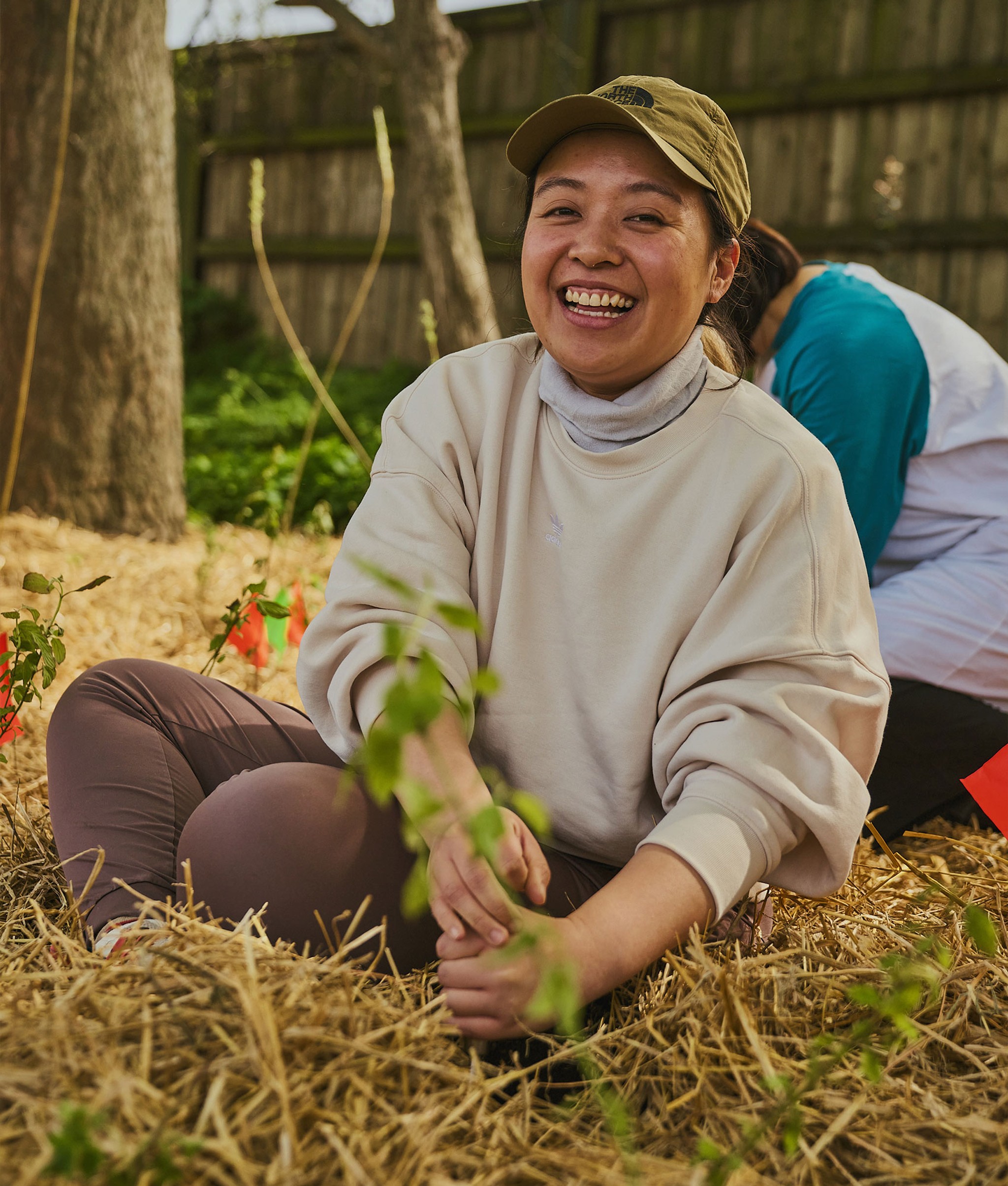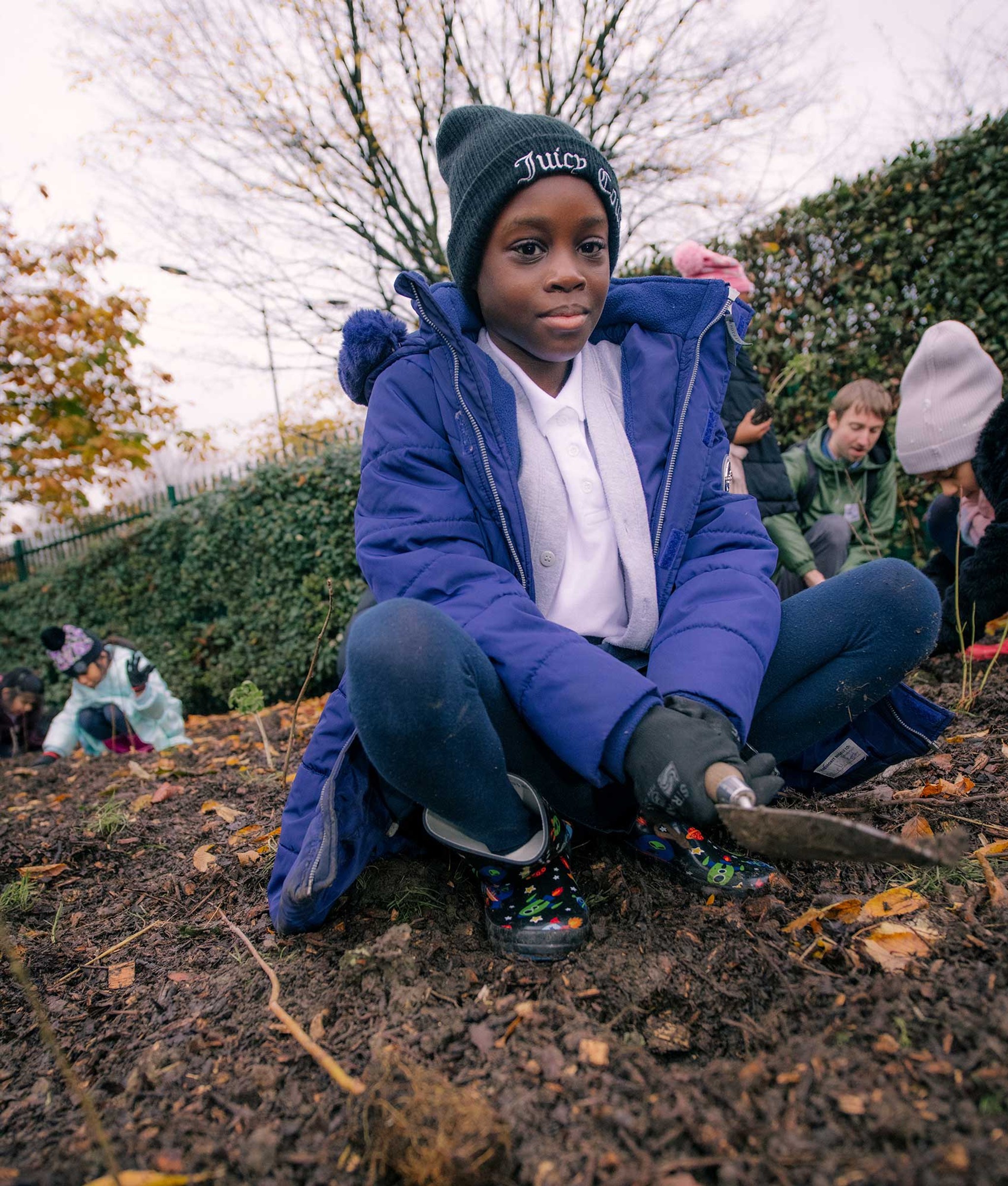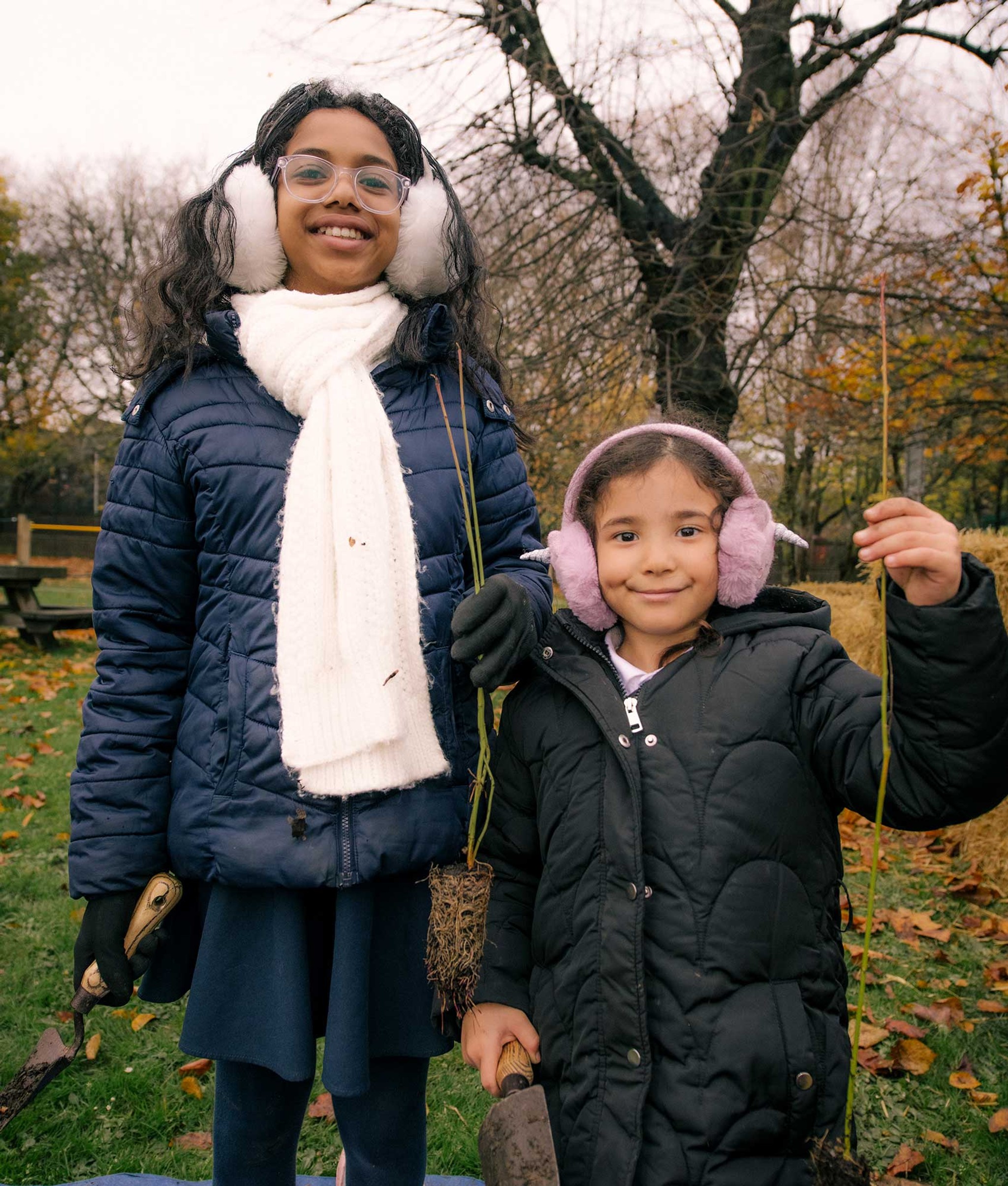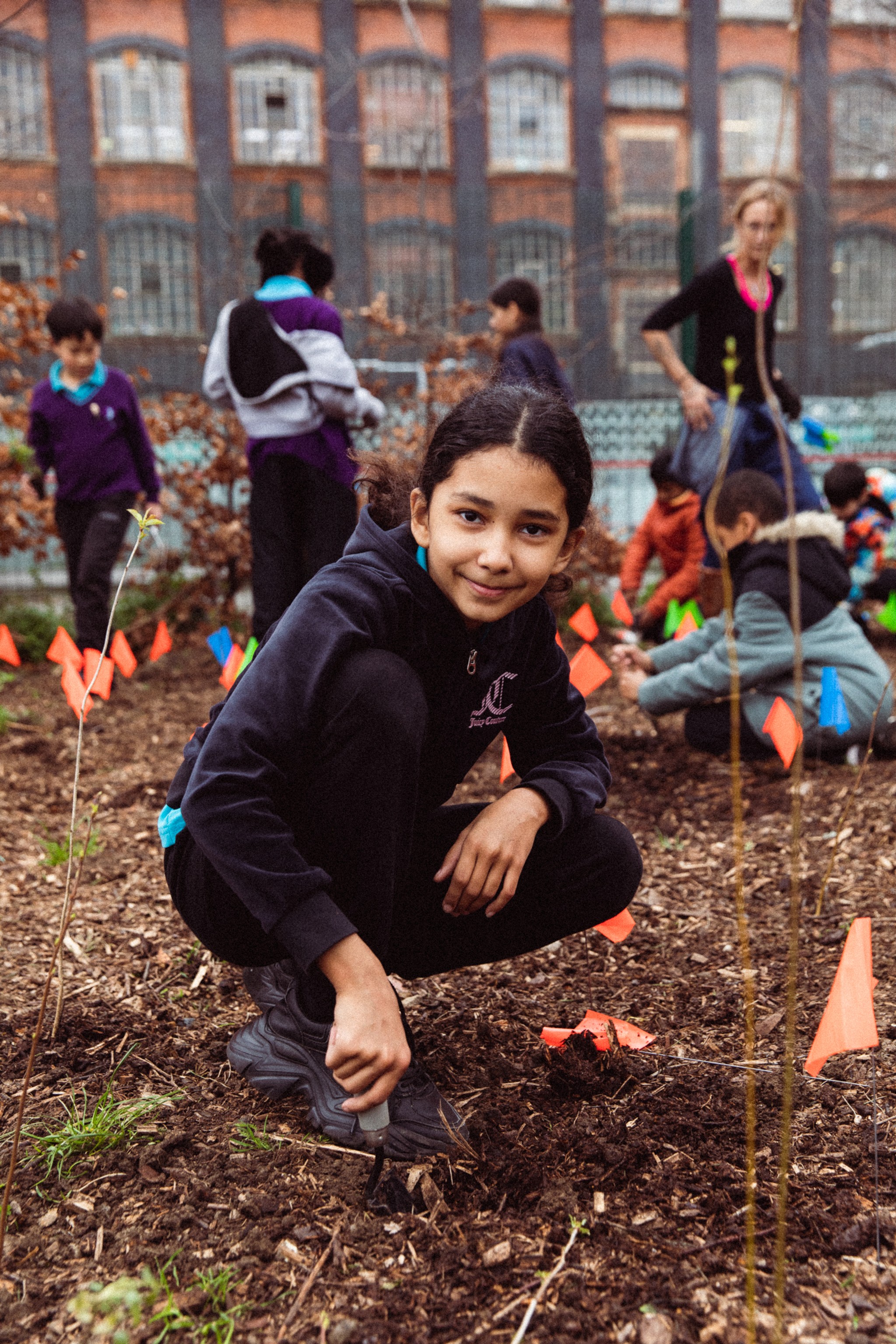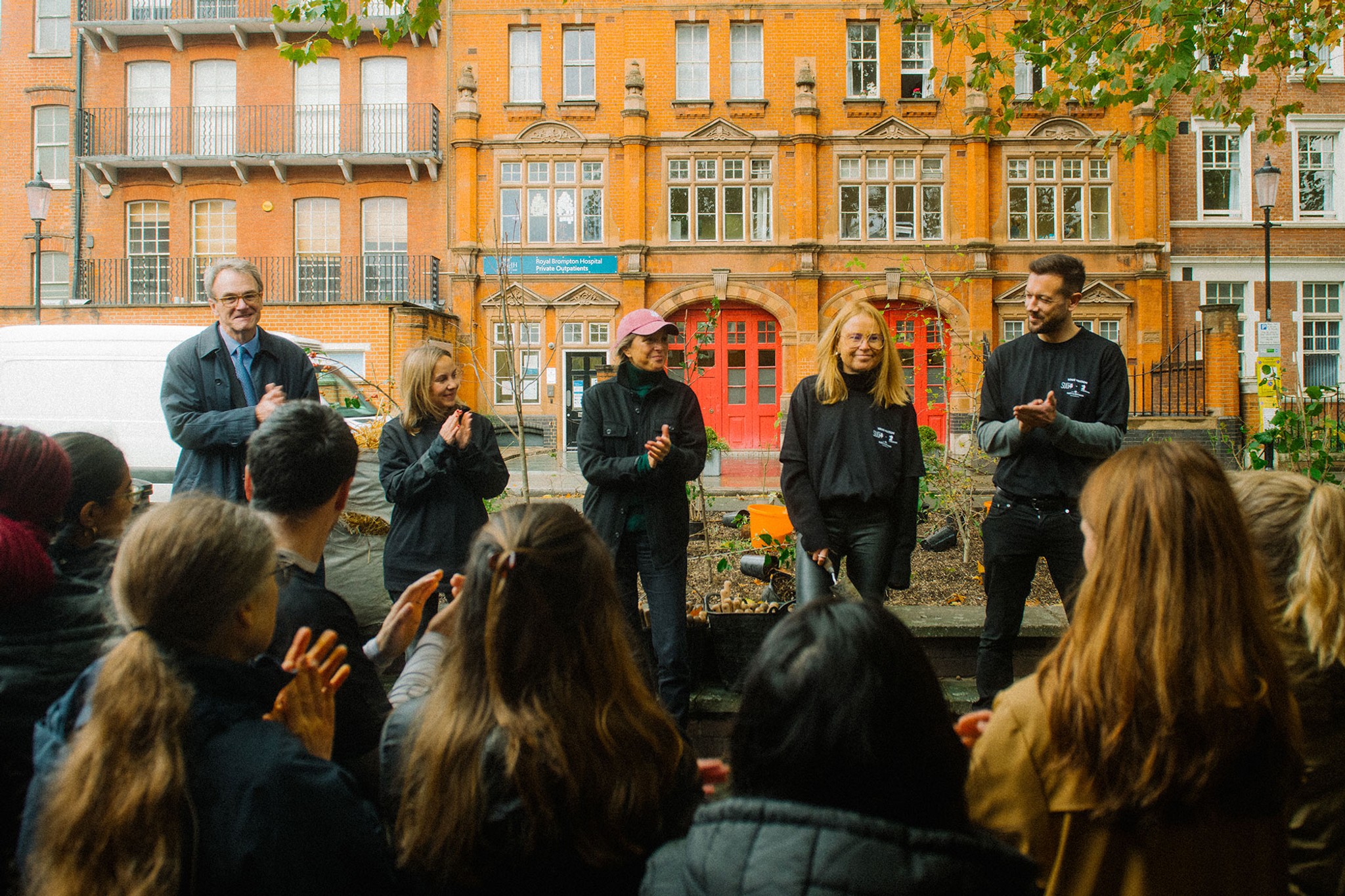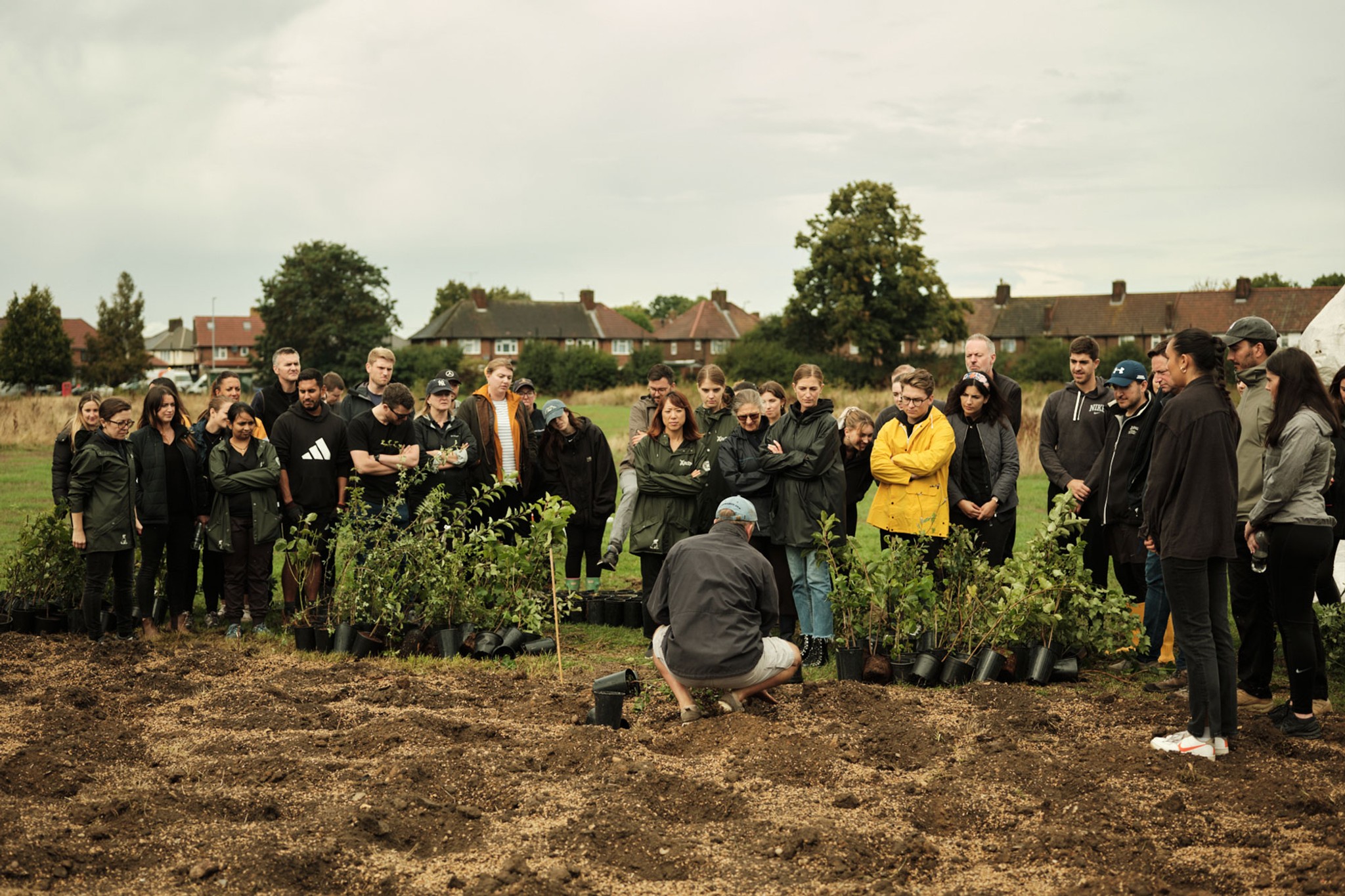SUGi Pocket Forests London | 2024 Impact Report

Imagine a future where dense urban centers are not overwhelmed with concrete, but bloom with lush green pocket forests, creating vibrant sanctuaries for life of all kinds to thrive.

In just four years, SUGi has planted 26 of these pocket forests of possibility across London, weaving a tapestry of biodiversity. London now has the second highest concentration of SUGi Pocket Forests in the world, trailing only Aurangabad, India.
This green patchwork is a bold stride toward transforming the urban landscape. With the Mayor of London’s ambitious plan to increase canopy cover from 24% to 34% by 2050, requiring 2.4 million trees, these pocket forests play a crucial role. Each SUGi Pocket Forest increases canopy cover in its local area by an average of 3% — a number that reached a peak of 21% in the Forest of Thanks.

And their impact isn’t confined to canopy cover. These small but mighty pocket forests create cleaner air for residents to breathe, reduce stress of harried workers, parents, and children, and encourage everyone to reconnect with nature as they walk down streets teeming with plant and animal life. Over the course of 2024, close to 100 people joined us on SUGi Walks, experiencing firsthand the transformative power of these pocket forests.
Pocket forests are also effective carbon sinks and natural cooling systems, reducing the urban heat island effect. They become havens for biodiversity, stitching together corridors of life and softening the hard edges of the city.
Without the involvement of local councils, corporations, institutions, and crucially, the communities in which the forests were planted, we could not have sparked this grassroots movement of planting pocket forests. Their support was key to making this impressive feat possible.
Impact London
0
Pocket Forests
0
Trees
0
Native Species
0
Square Meters
0
Youth Impacted
0
Schools
0
CO2 sequestration potential
0
Total Funds Raised (GBP)
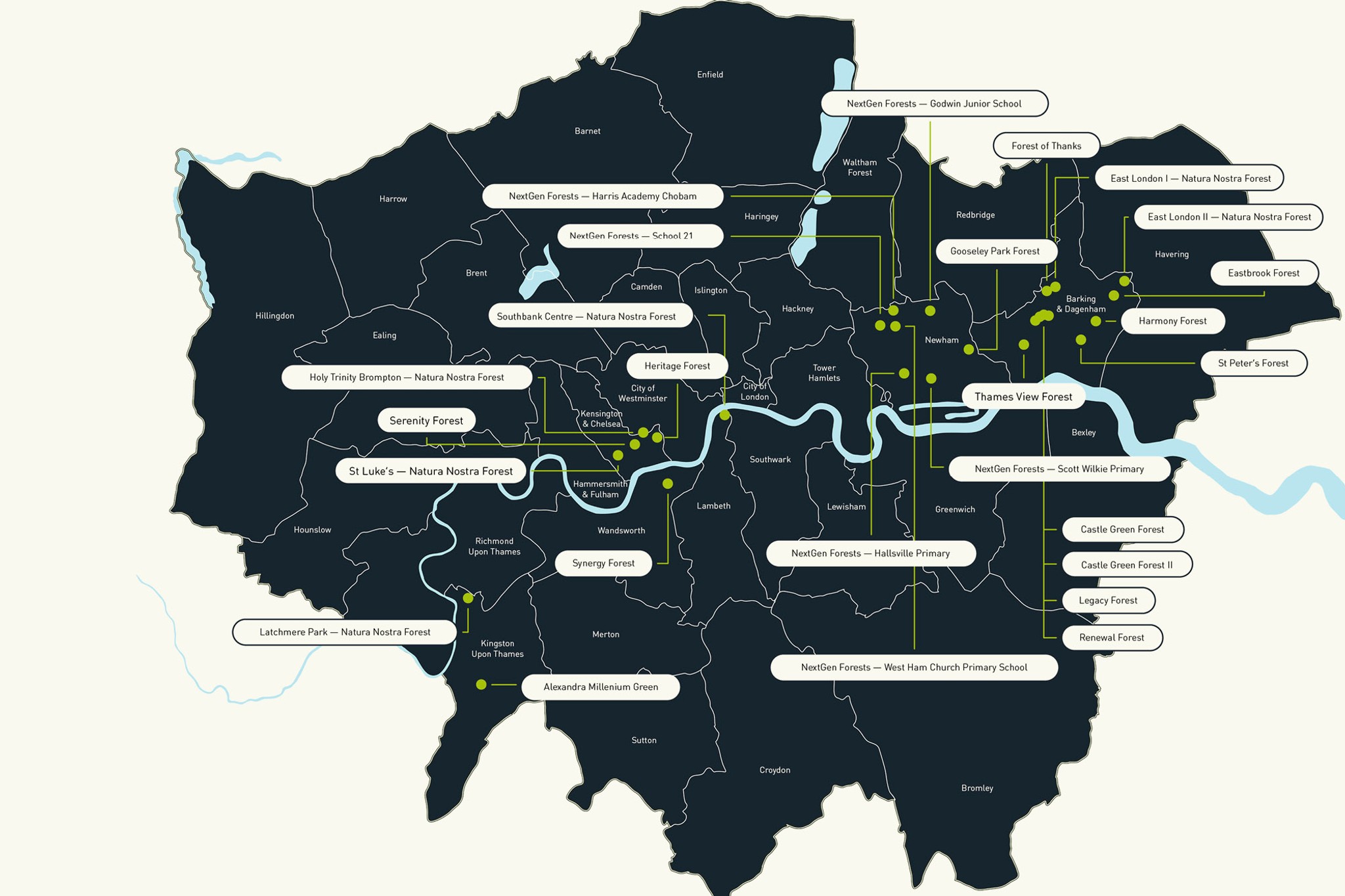
Urban Biodiversity
Celebrating the web of life: fungi, animals, pollinators, and plant biodiversity promoting human health and wellbeing.

Biodiversity, the variety of life on earth, developed over millennia to form interconnected and highly varied species and landscapes that are critical to human life.
In cities, biodiversity supports human life by filtering pollutants, regulating extreme weather, and improving our health.
This support is reciprocal: as children discover insects in the soil and residents cultivate plants in a garden, we are inspired by this connection with the natural world to contribute to a healthy planet.
However, biodiversity is in crisis. Driven by extraction, industrialization, and overconsumption, its decline has been rapid and global. As a result, global cycles are out of balance, including greenhouse gases, nitrogen, phosphorus, water, and life itself (Richardson et al., 2023). This decline in biodiversity has impacted every ecosystem type on every continent. Since the 1900s, the abundance of life on earth has declined by 20% and this rate is accelerating (IPBES 2019).
Global pressures on biodiversity often stem from cities, through sprawling development, excess dumping of pollutants, division of landscapes, and overconsumption of sensitive resources. Cities have a responsibility to address these pressures by implementing strategies that equitably address development, pollution, consumption, and sustainable living (Pierce, 2022).
Pocket forests are dense, biodiverse plantings that provide critical refugia for urban biodiversity and serve as demonstration sites for successful biodiversity conservation.
They inspire city-wide actions as visitors experience these mini-ecosystems and implement learnings in their neighborhoods, creating a ripple effect of urban biodiversity enhancement.
London exemplifies urban biodiversity efforts through its Biodiversity Action Plan. These efforts are further bolstered by the 26 SUGi Pocket Forests dotting the city, which demonstrate the power of small interventions.
Words by: Jennifer Rae Pierce COO of Urban Biodiversity Hub (UBHub)
Biodiversity observations in 26 London forests:
In 2024, I made over 120 visits to our 26 London forests. During those visits, I had firsthand sightings of a vast array of animal and plant life. I witnessed queen bees coming out of hibernation in the late winter, the buzzing of hoverflies, and bees gathering nectar from the early flowering plants; fox dens being built and pups running around in the summer; spiders hatching and forming a mass of babies that later catch the wind with webbed sails; and caterpillars chewing into the young leaves of trees and shrubs and pupating into beautiful butterflies, moths, and beetles.
Later in the year, squirrels and birds gathered seeds and then buried them in the soil. Mushrooms of all descriptions peppered the floor of our forests. In all, we’ve counted 192 different living bits of biodiversity while roaming the interiors of the SUGi London forests. It has been a pleasure to see so much life come to inhabit and flourish in spaces that not long before were gravel pits, paved areas, or unused desolate spaces.
Words by: Adrian Wong SUGi Forest Keeper

Hidden Life in Heritage Forest Pont Street
Now a self-sustaining SUGi Pocket Forest, this area was once gravel with a few plane trees. The rapid growth since planting in 2021 has restored vital biodiversity to the heart of Chelsea. Visitors can now see thriving native trees, shrubs, animals, and pollinators, but the web of life is also bustling out of sight, both below the soil and at a microscopic level.
To highlight the wealth of living species now flourishing in the rewilded area, we collaborated with fungi photographer Max Mudie. He captured macro images of numerous fungi and molds making their home throughout the Heritage Forest. Their presence demonstrates that strong mycorrhizal networks have developed underground and that the soil in the forest is healthy. It is especially exciting that some of the mushrooms observed are usually found only in old-growth forests (typically over a century in age), underlining the success of the Miyawaki ‘fast forest building’ method employed.

"I’ve seen species in this 3-year-old urban forest that I would normally only encounter in an old growth forest."
Max Mudie Fungi Photographer
Greening Cities
SUGi partnered with Newham Council to deliver the UK’s first Just Transition Plan.
0
Pocket Forests
0
Youth Impacted
0
Trees
0
Square Meters
In conversation with: Jacob Heitland, Director of Climate Action at Newham Council
Like many parts of the world, the London Borough of Newham has come face-to-face with the realities of the climate crisis in recent years. Torrential rain in summer 2021 caused flooding in the area, leading to multi-day road closures and leaving the local hospital partially underwater. Reports also suggest that Newham is the second most at-risk area to extreme heat across the UK.
Rather than sit back and watch conditions worsen, Newham has taken an innovative approach to tackling the borough’s challenges. The council announced a climate emergency in 2019, and last year its cabinet approved the first Just Transition Plan in the country.
The Just Transition Plan bucks the growing trend of net zero or decarbonization plans created by cities, countries, and companies. It thinks of the challenge more broadly, seeking to make the borough more sustainable, resilient, and equitable through a multi-pronged and multi-faceted approach.
Jacob Heitland, Director of Climate Action at the London Borough of Newham, explained the reason for this. Decarbonization is effectively meaningless to many people. What should individuals be doing to contribute to decarbonization? And how do you quantify it?
“We realized that even if we waved a magic wand and made the UK net zero tomorrow, Newham would still face these issues. Resilience and equity came out as major priorities as a result,” Heitland explained. “We want to tangibly improve people’s lives.”

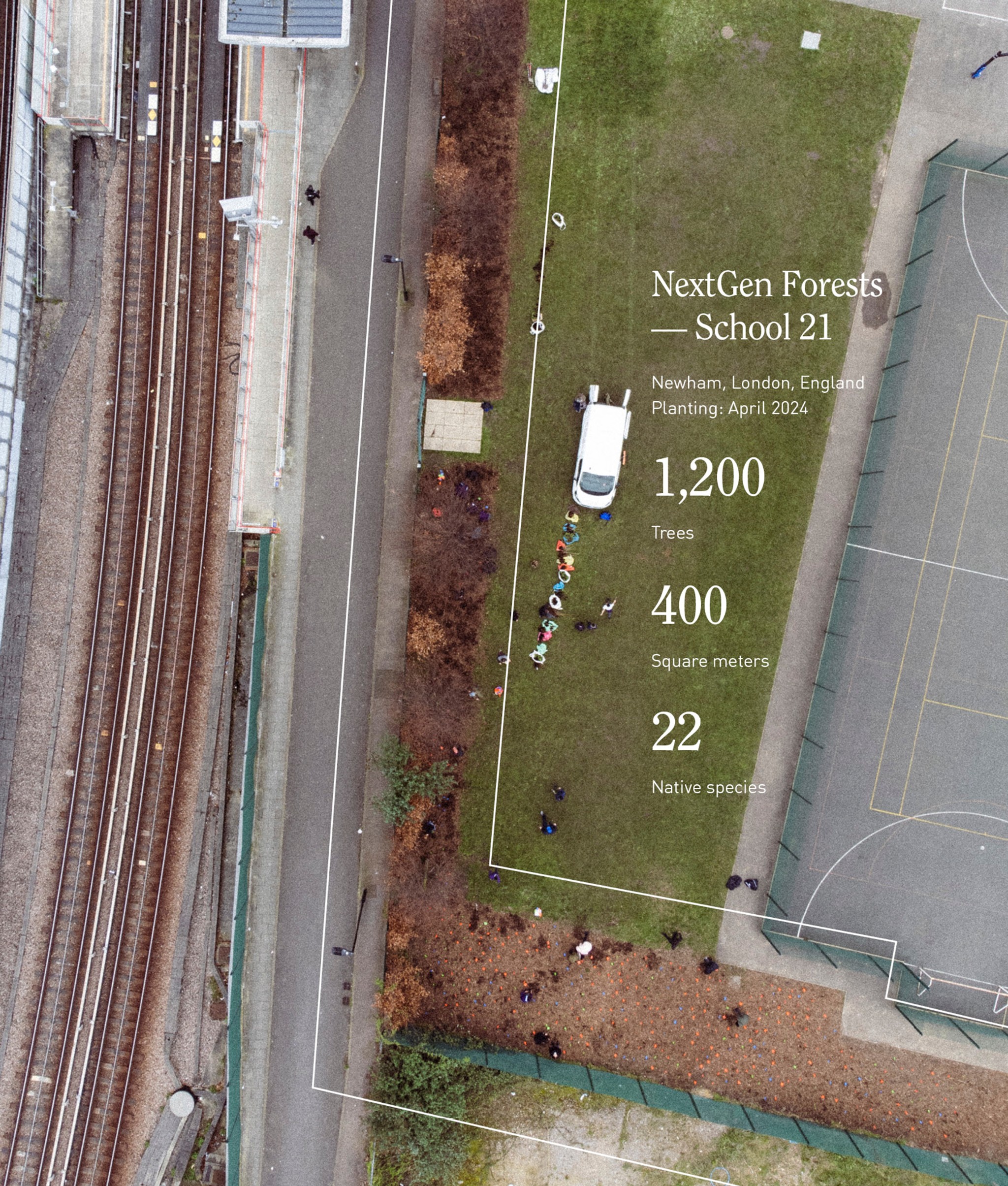
Newham faces a variety of climate risks, such as surface-level flooding risk, extreme heat, heavy built-up environment, and limited green space. At the same time, many people living within the borough may not have the economic luxury to worry about the climate crisis and these risks. If a family is living on a limited salary, their biggest priority is getting by and getting food on the table — not decarbonization. That’s why the plan thinks bigger, aiming to address all of these challenges and more.
Contained within the plan is a visionary partnership: a £500,000 investment in SUGi Pocket Forests, transforming Newham schools and other urban spaces (6 schools and 1 park to date!) throughout the council into biodiverse, tree-filled spaces.
The council has a big vision, but also recognizes its own limitations in terms of personnel and resources. That’s where SUGi comes in. “SUGi is a critical partner in delivering these urban green infrastructures, but also helps with some of the operational issues the borough faces, such as who manages and maintains [the forests],” Heitland noted.
"SUGi is an expert, delivering these forests with care, and embedding themselves in the places where they’re working. They show us what’s possible while embodying the ethos of the Just Transition Plan."
Like all of SUGi’s pocket forests, those planted throughout Newham will become self-sufficient in a matter of years. That, combined with our support in planting and initial maintenance, means that Newham Council is able to circumvent some of the major blockers or risks that could have stood in the way of delivering this element of their plan. This approach has opened Newham’s eyes to the art of the possible, demonstrating that there are different models for what planting in a city could look like.
Unlike simply planting individual trees, SUGi’s process also involves the community. This means that 3,309 children who may have never before even touched soil are part of the planting process — and then also have access to forestry school.
With over 8,460 trees planted across a total of 2,820 square meters, the schoolyards become cooler and more enjoyable, while providing the students with opportunities to learn about nature, biodiversity, and more. This creates a ripple effect of numerous unseen benefits. One potential outcome is that this creates a next generation of people who understand the importance of restoring ecosystems and rewilding cities, who are willing to fight for it.
“This approach is so intuitive. When we go for a walk in the forest, we understand that it’s a great place to be. We know nature is amazing, so why have we divorced from it in cities?” Heitland probes. “We don’t need highly engineered solutions. We just need to bring nature into cities — it already has the solutions we need.”
Each forest is strategically located, considering the risks Newham faces, such as air quality, extreme heat, and flooding. The Miyawaki method of planting is proven to address these concerns and others, including increasing biodiversity, reducing noise, and improving mental health. The objective is to make the borough cleaner, greener, and healthier — while building community and teaching students in the process.
SUGi is proud to be supporting Newham’s efforts to bring their Just Transition Plan to life, using small, cost-effective tools to make a big impact.
Cleaning Air
Leveraging green infrastructure to protect people from pollution and improve air quality.
In the London Environment Strategy, Mayor Sadiq Khan committed to support and empower London and its communities, particularly the most disadvantaged, to reduce their exposure to poor air quality. As well as reducing exposure, Khan has pledged to take action to achieve legal compliance with the UK and EU pollution limits as soon as possible. He has also committed to help make London the world’s first National Park City, where more than half its area is green, the natural environment is protected, and the network of green infrastructure is managed to benefit all Londoners.
London’s “green infrastructure” is the network of parks, green spaces, gardens, woodlands, rivers, and wetlands (as well as features such as street trees and green roofs) that is planned, designed, and managed to promote healthier living, lessen the impacts of climate change, improve air quality and water quality, and improve biodiversity and ecological resilience.
Source: Using Green Infrastructure To Protect People From Air Pollution, Greater London Authority
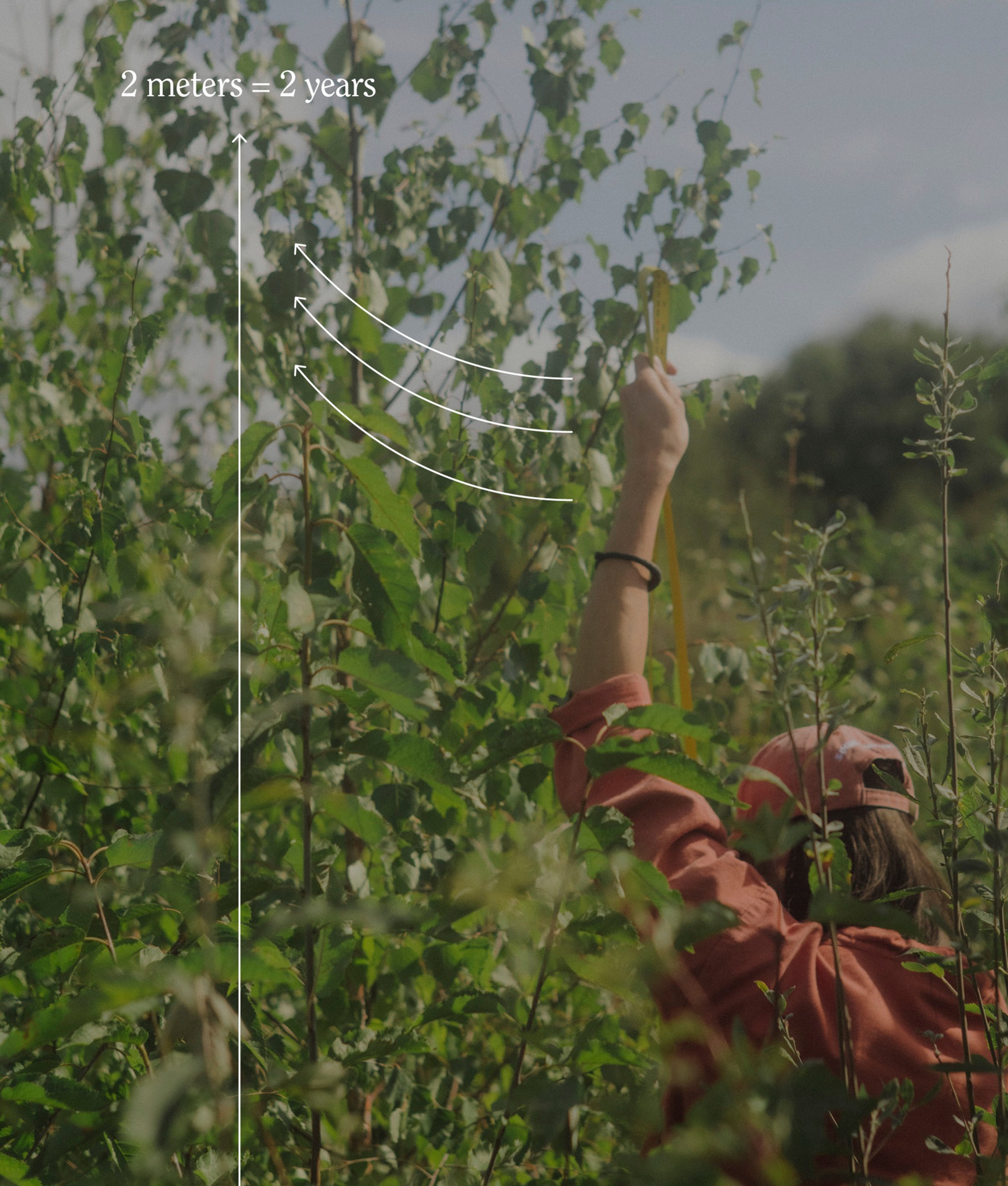
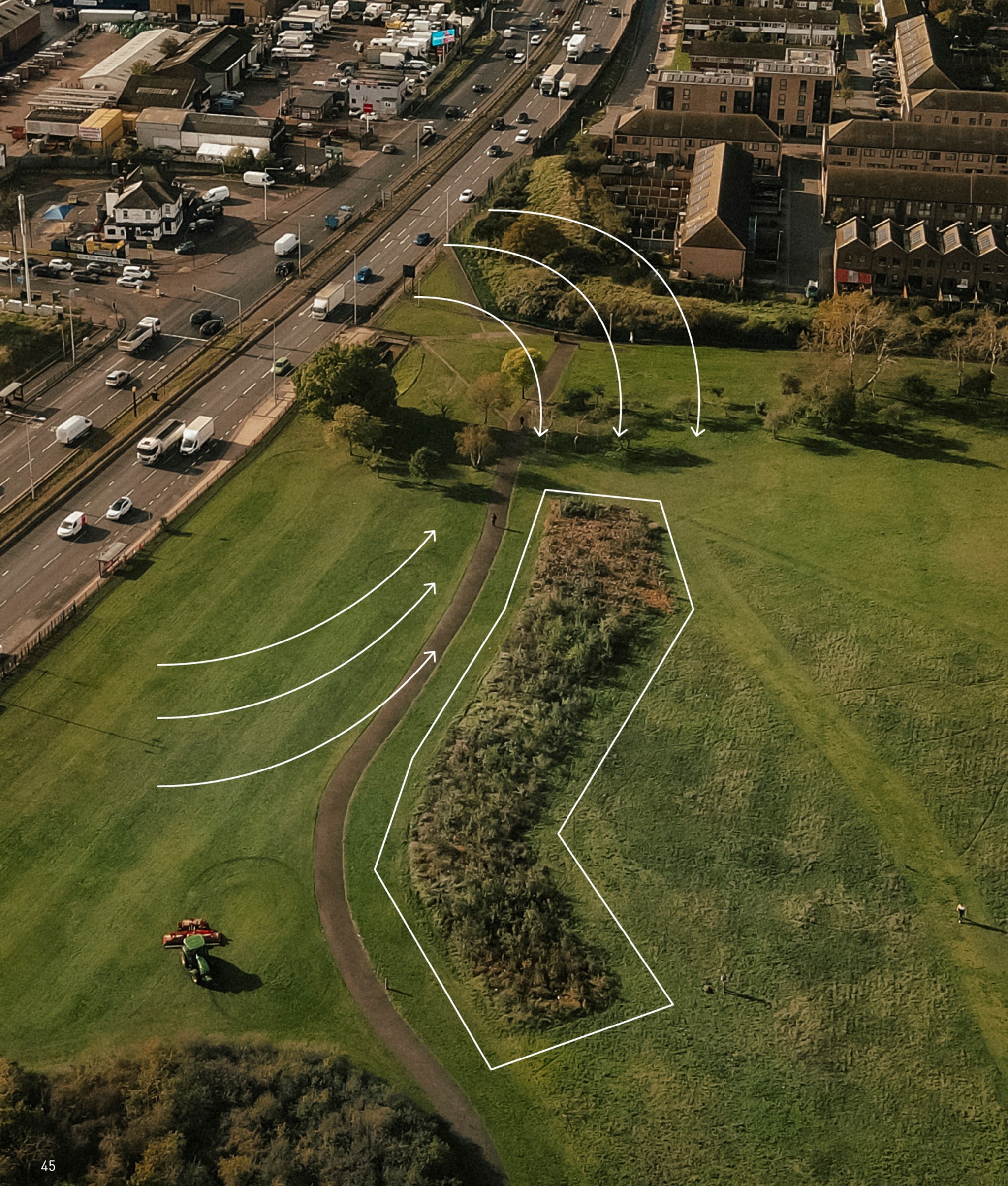
Using green infrastructure to protect people from air pollution.
A 200 square meter pocket forest can produce enough oxygen to support 30 people a year.
Like all trees, these forests capture CO² and emit oxygen, providing cleaner air for us to breathe. But that’s not all. Surrounding ourselves with green areas can improve our physical and mental wellbeing as well.
SUGi Pocket Forests can filter airborne pollutants through their dense canopies.
People who live, work, or study near a pocket forest experience reduced anxiety symptoms. Studies have also observed a delayed onset of serious health symptoms by up to 5 years.
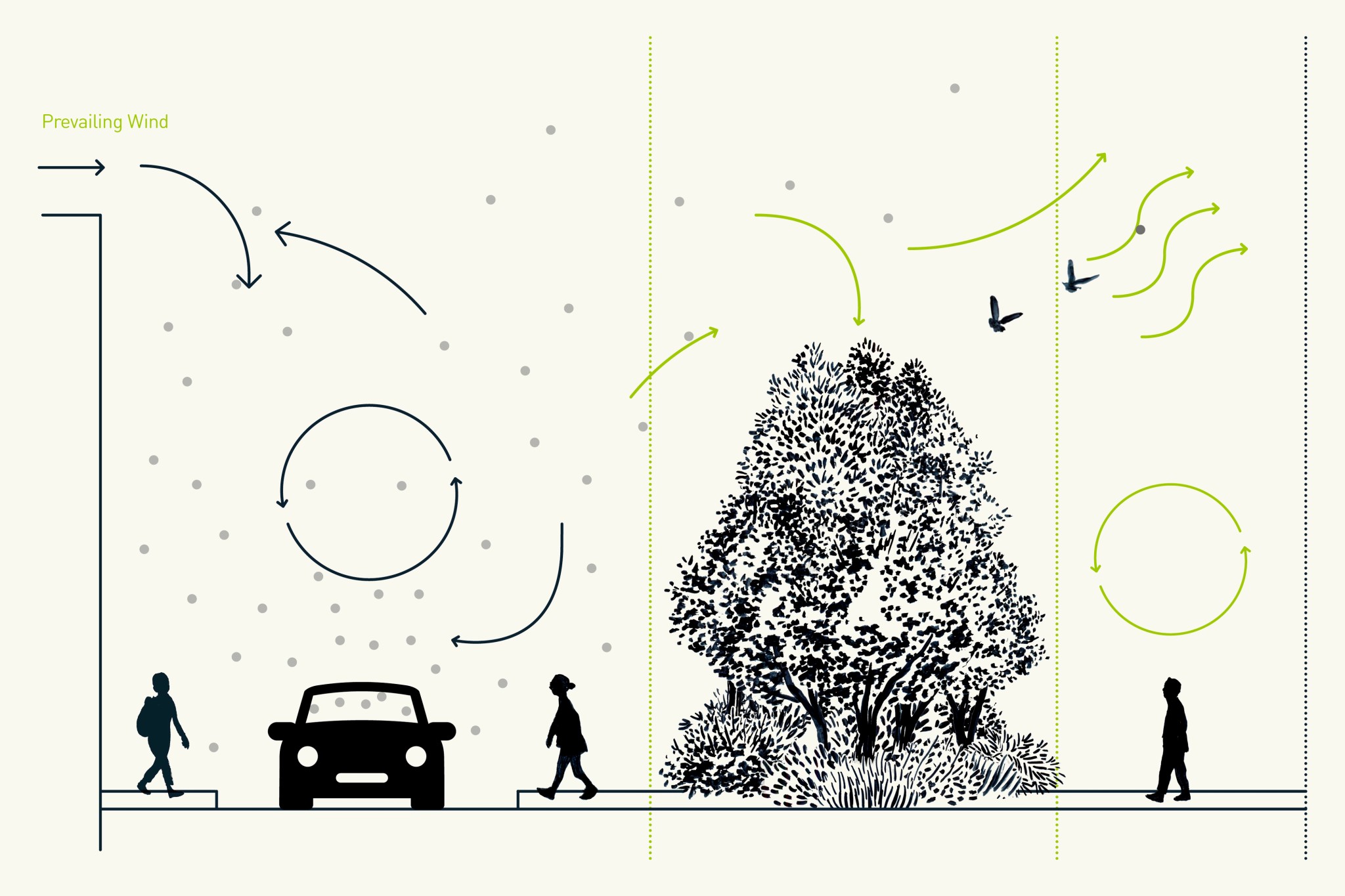
Resilient Cities
Mitigating the impacts of climate change and future proofing our cities from heat and flood.
Cities are increasingly becoming hotspots of extreme heat and flooding — a consequence of the way we have designed our cities, pushing nature out, and concreting up our streets and open spaces.
In 2024, the world saw record-breaking heat, with some cities surpassing 50°C. The frequency and severity of such heatwaves are expected to increase, with predictions suggesting that by 2050, the number of cities experiencing extreme temperatures could nearly triple.
Heatwaves and floods are no longer separate crises — each contributes to the intensity and frequency of the other. These combined phenomena particularly affect vulnerable groups, such as low-income communities, the elderly, children, and those with existing health issues.
But we can still act. Our cities offer an opportunity to reintroduce nature and build resilience.
Increasing tree canopy cover has been proven to lower temperatures in cities and reduce heat-related mortality. Research has shown that urban dense forests can reduce air temperature by up to 5°C. With Miyawaki forests we can reduce surface temperatures by up to 25°C.
Creating permeable surfaces by de-paving allows water to be absorbed, reducing runoff and cooling the environment.
Using every space possible to build resilience. More than half of the space in cities (including streets, railway corridors, roundabouts, park, gardens, etc.) is open space, providing a large canvas.
By designing in and working with nature, cities can better cope with the climate challenges of the future.
We have a tremendous opportunity to think about every single component of our cities and how they all contribute to making places liveable and resilient for generations to come.
Words by: Dima Zogheib, Landscape Designer, ARUP

How pocket forests cool our cities
SUGi Pocket Forests are 25.5°C cooler inside the forest than the surround-ing surface.
With temperatures all around the world — especially in cities — rising to new levels, trees and urban forests offer a natural solution to the challenges we face in our cities.
Having SUGi Pocket Forests integrated into our cities supports the health and wellbeing of communities. Urban forests do more than simply increase a location’s aesthetic; they protect us from the impact of the climate crisis by preventing flooding and mitigating the ‘Urban Heat Island effect’ and must be understood as a powerful tool.

How pocket forests absorb water and prevent flooding
SUGi Pocket Forests absorb 20 liters of rain water per square meter.
The dense mix of leaves, branches, and trunks found in a pocket forest can catch much of the rain, spreading its effect. Unlike areas without tree cover, the flow of the water gets trapped in the canopy, meaning that a significant percentage evaporates without touching the ground.
Deforested areas or impervious surfaces like concrete can’t absorb water. A pocket forest’s permeable soil, on the other hand, is able to soak up water like a sponge. The root systems also help manage stormwater, absorbing 150% more water than unplanted soil.

Reconnecting London to Nature
Promoting Connection, Creativity, and Play Between Nature and Community.

SUGi Wellbeing
59,206 people are living within 300 meters of a SUGi Pocket Forest in London.
"The forest has created a feeling of tranquility and community around the church. In a space that was previously a disused plot full of litter, it is now a calm entrance that showcases the link between nature and spirituality."
Holy Trinity Brompton Congregant Holy Trinity Brompton — Natura Nostra Forest - Kensington and Chelsea, London, England
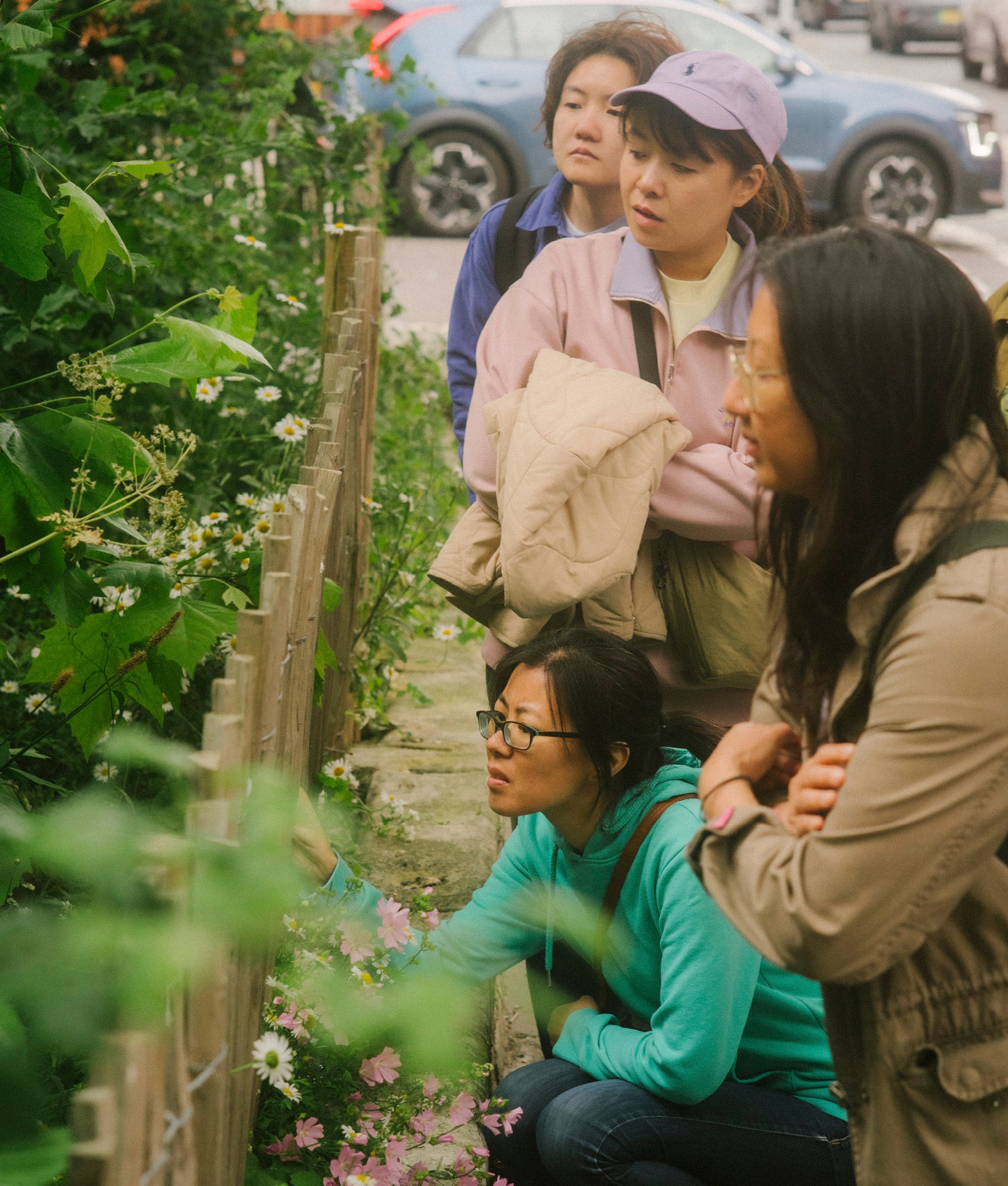
SUGi Plants
As we restore the soil, air, and all other elements of a healthy biologically diverse ecosystem, we strengthen social bonds between communities and help each individual reconnect with nature in a tangible and enduring way.
"Synergy Forest is part of a community-led initiative to connect the Doddington and Rollo estate to Battersea Park. The residents of the estate feel disenfranchised from the prosperous Battersea Park, and Synergy Forest is part of a network of green spaces that are connecting the residents to the park.
Mellisa Ritchie, Doddington and Rollo Community Synergy Forest - Battersea, London, England
Outdoor Classrooms
Reconnecting London’s children to nature.
0
Schools
0
Youth Impacted
Did you know that even seeing trees from school buildings can improve a child’s academic performance? The greener the setting, the sharper their focus. Learning in nature can improve a student’s behavior, help them build stronger relationships, reduce stress and anger, and heighten curiosity.
SUGi has planted pocket forests at ten schools in London alone, impacting close to 6,000 students. Bringing nature to the students in this way provides a host of benefits. These pocket forests are used as outdoor classrooms, literally bringing the learning experience outdoors. Rather than rely solely on learning via textbooks, students can study disciplines like ecology or biology in a hands-on way.
In an urban metropolis like London many of the young people may never have touched dirt before — quite literally. A National Trust study found that the average child in the UK only plays outside for four hours a week. And more than 10% haven’t visited a park, forest, beach, or other natural environment for at least a year. Involving students in the planting process and sustaining this engagement with nature is eye opening for them. The NextGen Forests across Newham, for example, integrate the forests into the school curriculum, encouraging students to explore and interact with the forest.

Sine Brown, Head Teacher at Godwin Junior School (NextGen Forests) noted,
We’re very pleased to have a forest in the heart of the school’s playground to facilitate the green curriculum that we’d already established — which we can now teach right here at the school, with nature on our grounds.
Our pocket forests do more than support the education of these young people. Many of them are planted in heavily-polluted, industrialized boroughs that are lacking in green space and biodiversity. Restoring ecological richness to these schoolgrounds contributes to improved air quality. It also supports young peoples’ physical and mental health and cognitive development.
The climate crisis has led to intense rainfall, flooding, or heat in many areas where we’ve planted. Pocket forests transform these “shade deserts” (concrete-filled areas with minimal tree cover) into verdant oases. In this way they combat the urban heat island effect, cooling the surrounding area and offering a more pleasant environment for kids to play.
(As a point of reference, the temperature inside one London pocket forest was 25.5°C cooler than the surrounding area.)
By bringing biodiversity back to playgrounds and nature into school curriculums, we can rebuild children’s connection to the natural world. And kids who have a stronger attachment to nature are likely to become its protectors — something we can all benefit from.
"EcoWarriors are a small group of students who take care of the pocket forest at Scott Wilkie. Joining the group is an honor at the school, and is a reward for showing an active interest in learning about nature. We’re very excited to have an opportunity to have children learn about the natural world right here at the school — and we’re very grateful for SUGi’s active support investigating the forest with the kids.“
Claire Singh EcoWarriors Students’ Initiative Lead
Scott Wilkie, NextGen Forests
"We were very excited about the forest — it not only serves as a protector against heat and flooding, but has created a space for an outdoor classroom for 15 pupils who can learn about nature directly from nature."
Sarah Bryant, Science Teacher, Harris Academy, NextGen Forests
SUGi Walks
This year we introduced SUGi Walks: a 5k nature walk through Central London with visits to our pocket forests.
Over the course of 7 months and guided by SUGi Forest Keeper Adrian, the walks took place once a month. Close to 100 community members joined us in learning more about the Miyawaki method, and the myriad of benefits of urban biodiversity and SUGi Pocket Forests.
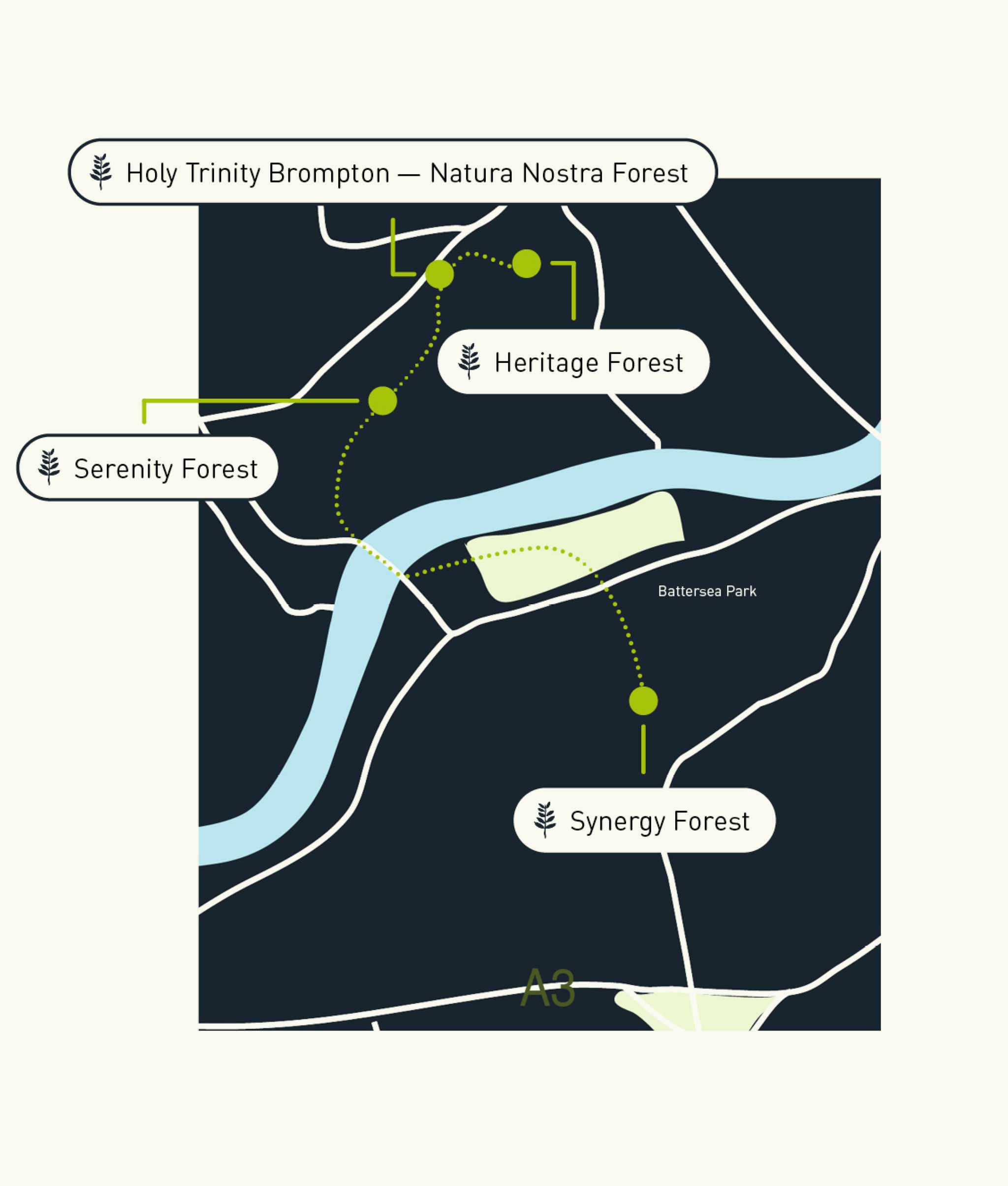
"Green infrastructure is a system of systems — an ecological approach to building more resilient cities — one that depends deeply on connectivity and collaboration. SUGi’s Pocket Forests are a powerful piece of that ecological puzzle and a wonderful example of community-driven changemaking."
Pete Ellis, SUGi Walks participant
A Council's Impact Journey
With the invaluable support of SUGi, The Ranger Service has successfully championed the establishment of Miyawaki forests in the London Borough of Barking and Dagenham, backed by senior management and councillors. Since 2020, SUGi has funded and planted 11 pocket forests in the borough and worked in partnership with the council on the Forest of Thanks (30,000 trees), which alone increased the local canopy cover by 21%.
Over the past four years, we have created a robust proof of concept, demonstrating that SUGi Pocket Forests can withstand extreme conditions, such as the unprecedented drought in 2022. This network of pocket forests has also inspired the council’s Sustainability & Climate Change team to secure over £180,000 in 2024 to plant a further 35,000 trees in the borough’s parks.
Words by Gareth Winn, Ranger Service Team Leader, Sustainability & Climate Change, Barking & Dagenham

























